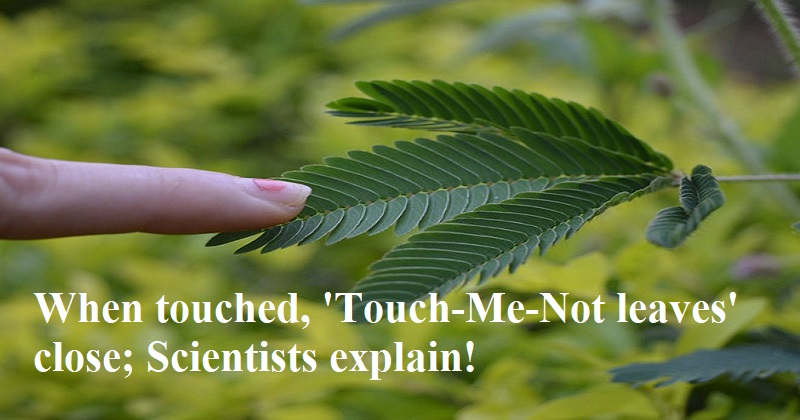
The ‘Touch-Me-Not plant,’ also known as ‘Mimosa pudica,’ which is renowned for quickly shutting its leaves when touched, captivated all of our attention as kids. The plant’s leaves appear to droop, shrink, and recoil at the slightest contact. Have you ever thought why the plant would react in this way, though?
An explanation for this was provided on Twitter by a science journalist, who also posted footage that Japanese researchers had shot for a 2022 study that was published in the peer-reviewed journal Nature Communications. The movies demonstrated how the presence of an insect on a plant causes electrical impulses to be produced and its leaves to fold.
Have you ever handled a Mimosa pudica plant and watched in awe as the leaves instantly folded? Ferris Jabr tweeted, ‘In this video you can watch the electrical signals that mediate that quick movement flowing down the plant in real-time’.
He stated in another tweet: ‘It is unclear why Mimosa pudica and other plants fold their leaves. Reduced water loss, thorn exposure, scaring insects, and the look of a less substantial meal are a few hypotheses. Here, M. pudica folds in reaction to a grasshopper that is eating it ‘.
He also added the following to explain this behaviour: ‘Plants are electric—all biological creatures are—despite lacking brains and muscles. Plants have the ability to produce waves of charged particles that swiftly flow from one area of their body to another and cause fast motions ‘.
Nature lovers who enjoyed the intriguing explanation left a variety of comments on Mr. Jabr’s article, which has gained a lot of attention. One user said, ‘Marvelous nature,’ while another added, ‘A childhood ‘toy’ explained!’ They may not have brains, but they do communicate and convey electrical messages, as one person who was left speechless wrote. ‘Thanks for sharing this lovely work, a fourth person added. I used to play with these interesting plants often when I was a child. In Venezuela, we dubbed them ‘dormideras,’ which roughly translates to ‘sleepy plant’.
Mimosa pudica, according to Britannica, is a spiny subshrub that can reach a height of about 30 cm and can be found in tropical and semi-tropical environments all over the world. The leaves respond to physical stimuli as well as darkness and light, a process known as nyctinastic movement, which causes the leaves to droop in response to darkness and reopen in the light.

Post Your Comments